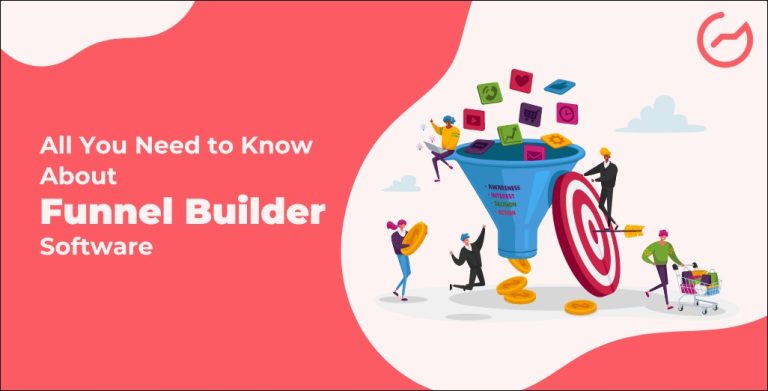How to Create a Branding Strategy for a Small Business? [Infographic]
Table of Contents
When you think of coffee, you want the Starbucks iced americano. Similarly, for a fast search engine, the first thing that comes to mind is the Google logo. When we want an expensive bag, we start looking for good deals with brands like Chanel. This shows that when we want the best product, we all go to a trusted brand. It is because an effective branding strategy builds trust among customers.
Your brand is not just a product, it’s what your business is all about and the experiences you provide to your customers. All big companies develop their brands and market them in order to provide a memorable experience during the purchase of their product.
This is what we call branding. Branding is not just making a logo and selling products. It has much deeper roots in making your business stand out from the race.
But when should you start branding your business? For small businesses, it’s a difficult choice. Amidst all the top priorities from marketing to advertising, setting your brand apart is a challenging task.
So here we are with a simple guide to branding strategy for small businesses. This guide will answer all your questions and help you in improving your online presence while boosting your revenues at the same time.
Summary
According to Accenture, 63% of consumers say that a brand’s culture and transparency are certain factors that attract them to buy from that particular brand. Your brand is a chance to tell your business’s story and culture to your audience.
Keeping this in mind, let’s take a look at the latest branding tips for your small business.
Introduction
Your brand is your business’s identity. It is all about those features and experiences that you attach to your business so that customers can associate your brand with your products and services. And the process of applying those features and experiences to your business is called branding.
Read More: What is Corporate Branding?
It includes both your business’s visual identity and your customer’s perception of your brand. For small businesses, branding is a natural asset in their business strategies that helps them to create an emotional connection with their customers.
Doing it right will help them gain tons of benefits and a higher ROI almost immediately. It will make their brand stand out amidst all the chaos.
Why Branding is Important?
Your brand speaks out about everything- your business, your products, customer and employee relationships, your promises and goals, etc. It is important to set your brand identity as a unique one. Let’s look at some of the most important benefits of branding.
1) The Deciding Factor for Consumers:
86% of consumers say that authenticity is a key factor when deciding what brands they like and support. When you say you want to have a Starbucks coffee, it’s your trust in Starbucks’ brand that conveys that its coffee will be the best among all cafes out there. Your brand’s identity is a deciding factor for your consumers while purchasing your products and services. It builds trust and showcases the authenticity of your brand to your customers.
2) Gives Your Business an Identity:
Branding gives your business an identity that brings out its uniqueness. It provides something to your customers to relate with and feel a connection with. It proves the credibility of your products and services.
3) Makes Your Business Memorable:
Your brand is the face of your business. It is the culture that your business follows. It distinguishes your business from others on every medium, giving your business an image that is memorable and will forever be remembered in your field.
4) Supports Your Marketing Efforts:
Branding improves the trust, impact, and recognition of your marketing and advertising strategies. A brand is something that reflects your business approach and its success story.
The 7 Steps Of Brand Development:
Now that we know why branding is important for small businesses, it’s time to build your brand’s identity. Building a branding strategy is not something you can achieve overnight. It is a process of researching, developing, and applying distinctive features to your brand, and all this takes a long time.
So, without further ado, let’s go through the 7 steps of brand development to get started.
1) Decide Your Brand’s Purpose:
The first step is to outline your brand’s purpose. Your brand defines your business. So, it’s important to have a clear mission statement that your brand is going to communicate.
2) Research Your Competitor Brands:
You can’t win the battle without having a prior understanding of your enemies’ strategies. Researching your competitors will help you gain more knowledge about your target audience and how they respond to your competitors’ branding strategies.
3) Decide on Your Target Audience:
The next step is easy, decide on your target audience. You can’t develop an efficient strategy without having knowledge of who it is targeting. Research about the likes and dislikes of your audience and narrow down your niche to achieve better results from your branding strategies.
4) Set Your Brand’s Style:
It’s time to set your brand’s personality. Will it be a serious one, a musical one or a traditional one? Your brand’s personality decides your brand’s message and its visual identity. It sets a path that you are going to follow in the next steps.
5) Develop Your Brand’s Message:
After the brand’s personality, develop your brand’s story and its message. What it is going to communicate across all marketing platforms is something that your customers will connect with. It should be strong and interactive.
6) Create Brand’s Visual Identity:
For every brand, its logo and visual aspect play a significant role to achieve its unique identity. Which color palette your logo should have, should you go for a lettermark logo or wordmarkwhat content and message your website will show, you need to follow the right and professional way to decide all of this. A strong visual identity can be a game-changer.
7) Integrate Your Branding Strategy with Marketing:
Finally, set your branding on work. Integrate it with your marketing and advertising strategies. Be consistent with your branding message as it will engage your audience in a similar way.
Conclusion
Did you know, 77% of marketers feel branding is a crucial factor in future growth? Branding is an essential part of small business marketing strategies.
Apart from online branding strategy, content marketing is another key factor that will help boost your brand’s value. Did you know, 61% of marketing consumers claim that content marketing increases brand positivity while 50% of marketers claim that it positively impacts purchase decisions.
But it’s not an easy task to be consistent with your content strategies. One way to achieve consistency is using interactive and trendy content in your content marketing strategy. Interactive content includes quizzes, calculators, giveaways, polls, etc. You can learn more about interactive content and can sign up for Outgrow’s 7-day free trial and improve your branding with interactive content pieces.





